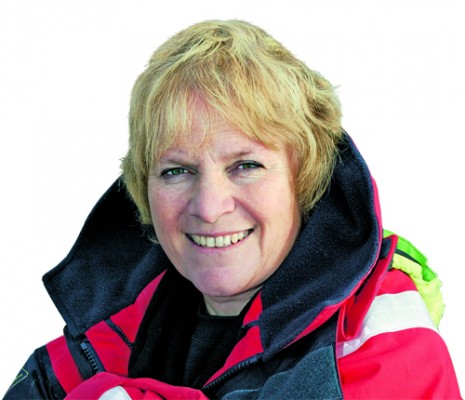Libby purves: The quest for comfort is giving rise to ever-larger yachts, but don’t forget the ease of a handy little pocket cruiser
A fine idea this month, for YM to warn about The Shock Of The Big (p34). It is easy to to think that a roomier, faster, grander boat is always a source of instant joy to her inhabitants. Yet few sights are more heartbreaking than the suddenly rich first-time buyer who sommits to a 50-footer and weaves round the marina like a terrified tick-bird trying to steer a hippopotamus. Most of us go up gradually, step by step (in our case 22ft, 28ft, 32ft, 36ft, 38ft, and that’s the end of it). There’s often a fast upward leap, though, on charter trips or when a sudden inheritance coincides with certain family members getting a bit upset about the lack of facilities for long showers, frozen yoghurt and multiple lavatories. One minute you’re nipping around in a sort of nautical Mini, the next struggling to manage the equivalent of an eight-wheeler HGV.
The pressing need, as Rachel Sprot makes clear in her article, is for the helm to know the difference in speed, windage, prop-walk and so forth. But what about the crew? Every upward leap we have made has produced small but significant surprises for everyone. Not least me. It began when we realised that our routine hurling of tea-bags over the side from the cockpit (biodegradable, 30 miles offshore, yes yes yes) led to a sad little heap of them on the side-deck. We were wider than we had ever been. At least we have never been crazily wide down below, not in our own boats: only on charter have we had the experience of rocketing from side to side of a vast palatial saloon with no handholds in modern French cruisers (you know who you are, you caravannish designers!)
The outraged boat made it clear that her tonnage required dignity and forethought
But even a traditionally shaped boat, when bigger, presents new daily ordeals. Approaching a windy mooring on the old Contessa 26, if the first mad lunge with the boathook didn’t make it, this gallant crewlady could hurl herself face-down by the pulpit and reach out an arm. As topsides grew higher and higher, boathooks grew longer, moorings retreated into the middle distance, and precision became more of a fine art. So, in the absence of ladders, did the ability to get back aboard from a dinghy or a swim.
One of my greatest surprises, which should have been no such thing, was the moment when we first owned a much heavier boat and brought her alongside in marinas. Where previously a firm grab of the shrouds would stop her momentum, suddenly this routine attempt to settle the oldgirldownledtonothing but a rapid Tom-and-Jerry sideways scuttle as the outraged boat made it clear that her tonnage required dignity and forethought. The same applies to remembering to take a turn round the mooring-cleat or bollard RIGHT AWAY, because otherwise….aaaghh. And do not write to me, dear RYA police, saying that I should never, even in a Leisure 17, have attempted anything so rash as standing on a wobbly pontoon manhandling a boat by her shrouds. Of course I shouldn’t. But it was dead easy, and strangely satisfying. Now it isn’t.
And how about the anchor, eh? It gets heavier. Much, much heavier. Out of all proportion, mutters the struggling foredeck hand. Time was when the very idea of an electric windlass seemed like the ultimate weedy, nancy device, and either of us could haul in the chain hand over hand like proper mariners. Not now. And indeed there is a lovely demographic irony in how as owners get older, mortgages paid off, promotions and savings flourish, we get bigger and bigger boats ‘for comfort’ just as our physical ability to haul their gear about is starting to decline. Have you tried manoeuvring a 50-footer’s genoa in its bag lately?
So Beware of Bigger. And notice how some people who could well afford an extra few metres are sneakily going back to handy little pocket cruisers. They’re not stupid.
– Libby Purves




